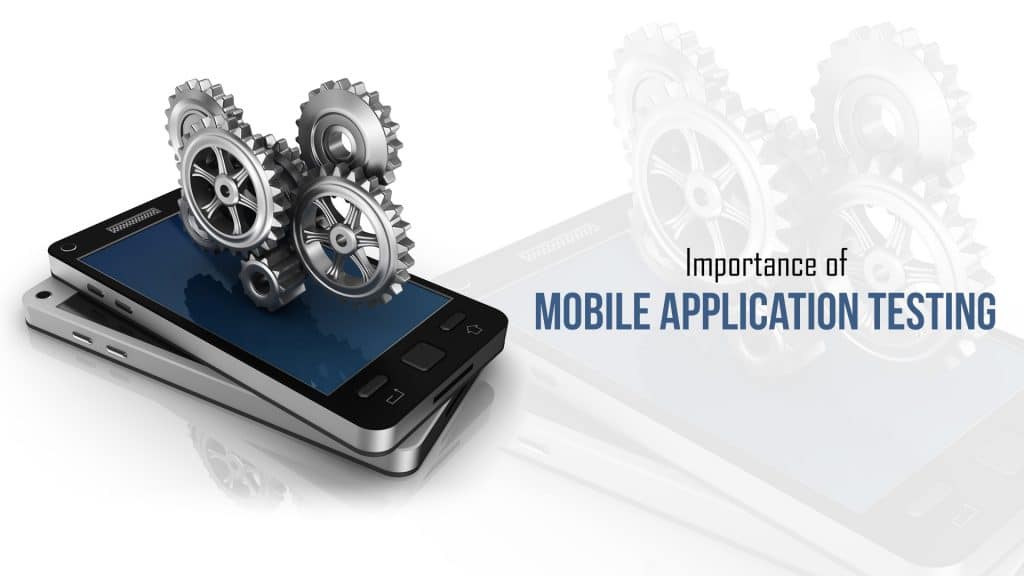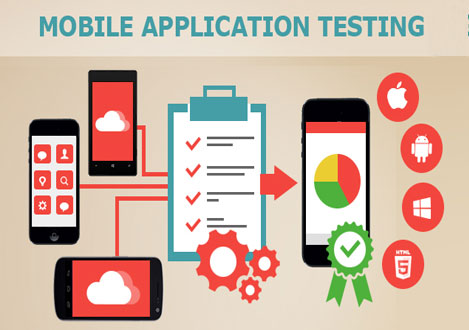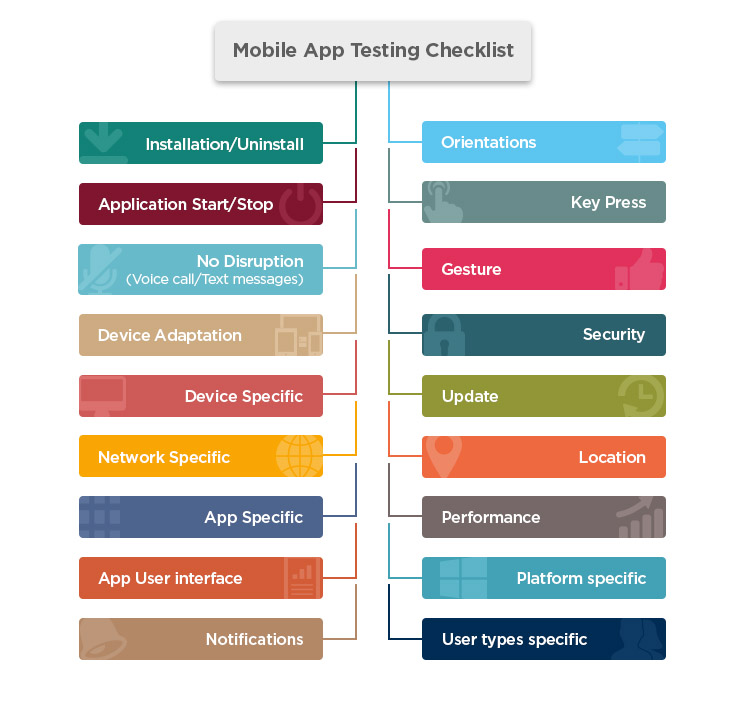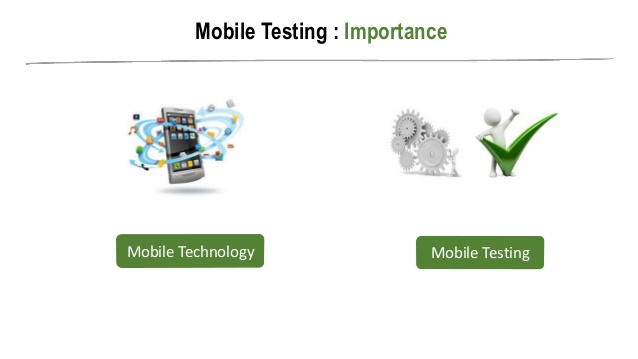In this fast-growing world, the mobile phone is not only treated as a device to make and receive phone calls, rather it is worshipped as a multipurpose personal gadget. There are more technological improvements and the propagation of mobile devices with different Operating Systems like Apple iOS, Android, Windows Phone, Blackberry and Symbian etc. Hence, it can be stated that in this competitive world, there are new challenges for hardware manufacturers to stay in the competition.
Mobile Application Testing can however help you take a lead in this competition!
Mobile application testing is a process by which application software developed for handheld mobile devices is tested for its functionality, usability and consistency. It can be done by automation and Manual testing.
Some Mobile applications are already installed on our devices and some are installed from the suitable platform like (Android, IOS, blackberry) of the device. Mobile devices have witnessed a phenomenal growth in the past few years and it is predicted to continue so in the near future.
Jump to Section
Key Challenges in Mobile Application Testing
Below is a list of key challenges faced in Mobile app testing:
- Variety of Mobile Devices
- Diversity in Mobile Platforms/OSes
- Device Availability:
- Mobile network operators
- Scripting
- Choosing how to test
Why Is Mobile App Testing Important?
In the last few decades, testing of mobile application has emerged as a very important point of concern for the app developers.
A smartphone has become an indispensable part of our lives, whether it is an individual or a corporate. Having a mobile app or a mobile website is mandatory for any business. This further calls for having a user-friendly mobile app that adds to your organization’s value.
If the mobile testing is done in a significant way, the number of bugs can be effectively reduced. Added to this, a proper mobile application testing lets you identify the bugs right at the beta stage of the development lifecycle. This further saves your app reputation in the market and makes it possible to succeed and achieve your business goals smoothly.
Around half of the poor reviews on the app stores are based on concerns such as crashes, poor performance, and battery drain. It’s a fact that there’s no major software engineering field rifer with possible hazards that mobile development. Everyone has experienced the sudden surge of frustration which results in a deleted app. That is why mastering the art of mobile testing is increasingly growing in relevance for any organization that wants to stay competitive.
The majority of software companies have already recognized the value and relevance of investing in mobile apps development. That is why it only makes sense to extend the investment to testing mobile apps as well, regardless of the added complexity and cost that programming and testing for various mobile platforms entails. In the long run, the extra work involved in quality assurance will surely pay off.
Testing is the answer to the Mobile App concerns
Mobile testing provides the answer to mobile woes and could help developers prevent failure of a program. Nonetheless, knowing that testing should take place and determine what to test are different things. It could be a challenge to find out the specific elements that have to be tested, as if any of these vital aspects are missed, the application could erroneous. There are various areas that should be tested, and different features under every category as well.
For ensuring the better quality of an application, functional testing should start at the initial level. Functionality tests must include clients requirements and the basic functionality of the application. In addition, developers must check out media components like video and audio playback, compatibility of libraries and scripts and any calculations or manipulations that the application could carry out.
Testing Strategy for Mobile application testing
Mobile application testing strategy that ensures Quality Assurance align with business goals, customer expectations, and industry best practices:
1. Selection of a mobile app
With the selection, there are two choices, choosing a gadget model or choosing between substantial devices and emulators. Other factors like connectivity options, memory size and more should be accounted for when choosing a device model.
2. Mobile testing on cloud
Mobile testing that is cloud-based makes potentially infinite scenario combinations easier to manage. This is a desirable option for testing mobile apps. The cloud offers a web-based testing environment wherein apps could be deployed, tested and managed.
3. Emulators vs. Physical devices
One could also decide among emulators or physical devices. In the starting stages of development, device emulators are very useful since they help in fast and efficient testing, particularly in an agile development scenario; whereas as far as the concern of Physical device testing leads to beta testing as a very useful method which provides accessibility to real devices, real-world testers, actual networks and a bigger geographic coverage.
4. Network connectivity
This considerably affects mobile apps as the majority of mobile applications rely on network connectivity to function correctly. Real-time testing of a mobile app for network connectivity is quite complicated because we cannot predict the application behavior.
5. Manual vs. Automated
The key to a successful regression is automation during the development stages. However, automated testing requires a large amount of initial investment.
Type Of testing which can be performed by mobile application
There are various types of testing opted during the processing of mobile app testing and they are as below:
Unit Testing
In this case, the developers themselves run the automated tests and each of these tests targets a narrow part of the overall application behavior.
Functional & Acceptance Testing
Quality analysts team performed this type of testing or certain automated UI testing frameworks do the trick as well.
Performance Testing
This type of testing is usually performed along with the various types of tools. Apart from this, a developer opting for a real-time data also helps them to integrate app analytics for a better overall understanding of how the app works.
Certain challenges faced during testing of mobile application
If the user writes an application which works for each of the target platforms, then any testing on the code level will probably not be transportable. Apart from that, most of the scripted UI automation testing tools are not supposed to work for most of the platforms either. Even the tools work properly but the QA needs scripts for each platform.
Keep in mind that there are hybrid solutions accessible for mobile beta testing, in any case, these by and large, don’t fill in the same class as the local instruments when you consider the performance profiling.
Apart from mobile application testing, to make your app better, it is important to notice the overall user behavior as well. This can be easily done by using a third-party analytics service. Well, some of the mobile testing services provide their own analytics service as well and you can avail the same at slashed prices, therefore fitting your actual budget.
Not just such examination give you data about user engagement or demographics, you can likewise utilize these third-party analytics tools for measuring certain bits of the real application execution from inside the real world usage. Real world performance metrics can actually turn out to be very useful when you decide to fine-tune your mobile app depending on the needs of the users.
Mobile app testing has become a crucial part of mobile apps development. Majority of problems that an app faces, could be addressed through a successful mobile app testing. This also increases the go-to-market time and ensures the success of the app. A professional mobile app testing company could guarantee the functionality and quality of the app.
- COVID-19: How We Are Dealing With It as a Company - March 23, 2020
- Agile Testing – The Only Way to Develop Quality Software - February 8, 2019
- How to Perform System Testing Using Various Types Techniques - May 16, 2018




